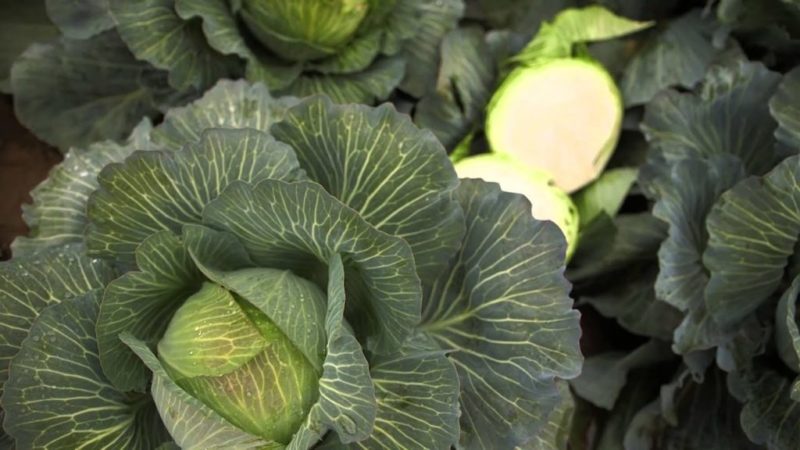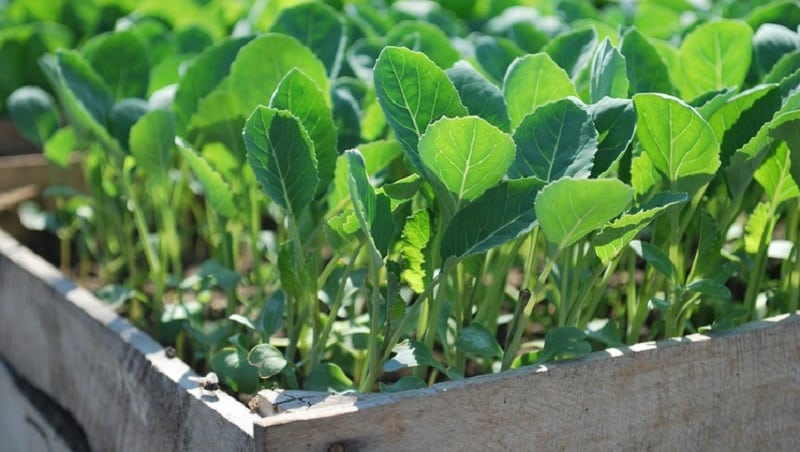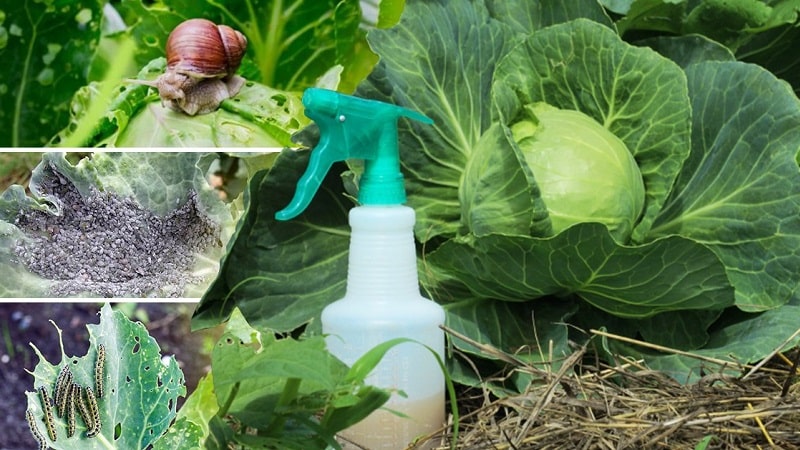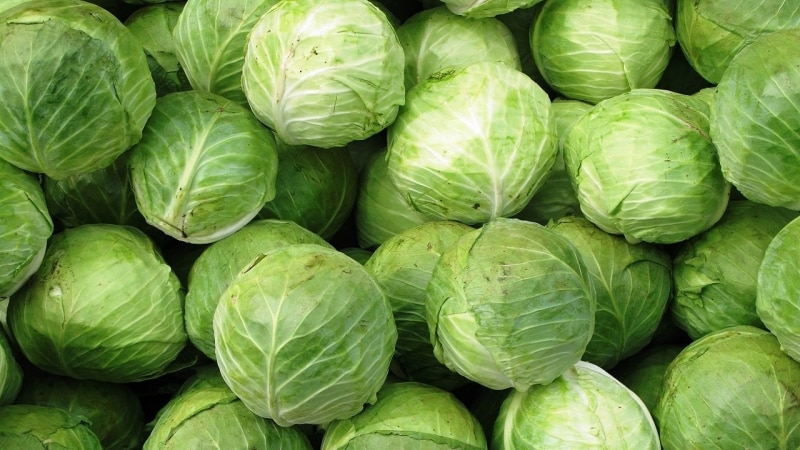High-yielding unpretentious cabbage hybrid Kilaton f1
White cabbage is one of the most popular vegetables grown in home gardens. The Kilaton F1 hybrid has long been loved by summer residents for its versatility and other positive qualities. Its agricultural technology has a number of nuances, but if they are observed, the varietal potential is fully revealed.
Description of cabbage hybrid Kilaton F1
Kilaton is one of the cabbage varieties that meet modern requirements for crop quality and ease of care.

Origin and development
Hybrid Kilaton is the result of the work of Dutch breeders at Syngenta Seeds. In Russia, it has been officially included in the State Register since 2004. Distribution is carried out by large seed producers: “Gavrish”, “Partner”, “Gardens of Russia”.
The variety received its name due to its immunity to clubroot. This is one of the most common and dangerous diseases of cruciferous crops, resistance to which was instilled in Kilaton.
Chemical composition and beneficial properties
Substance content per 100 g:
- carbohydrates - 4-5 g;
- proteins - 3-5 g;
- fats - 0.2 g;
- 30 kcal.
Carbohydrates include sucrose, glucose, fructose, and carotenoids.
Nutrients, vitamins and minerals:
- vitamins A, C, B1, B2, B6, B9, K;
- nicotinic acid PP;
- copper, chromium, phosphorus, silicon, zinc, calcium, potassium, manganese;
- cellulose;
- amino acids, fatty acids, sterols;
- a small amount of iodine, iron, fluorine, sodium.
Benefits of cabbage when consumed in moderation:
- normalizes digestion;
- strengthens blood vessels;
- antioxidants in its composition neutralize free radicals;
- indispensable in dietary nutrition;
- strengthens the immune system.
Features of application
The use of the hybrid is universal. Heads of cabbage are consumed fresh, fermented, salted, stored for long-term storage (7-8 months).
Ripening time and yield
Kilaton is a late-ripening hybrid. From the moment the seeds germinate until harvest, 120-140 days pass.
The yield in the fields is 300-600 c/ha, in rare cases it reaches 750 c/ha. In summer cottages with 1 sq. m, 10-11 heads of cabbage are collected. If you take 3 kg as the average weight, you get 30-35 kg.
Resistance to disease and cold
Resistant to clubroot and fusarium, rarely affected by vascular bacteriosis and point necrosis.
It has proven in practice high resistance to low temperatures (down to -5°C).
Description of the appearance of leaves and heads of cabbage
The leaf rosette of Kilaton has a spreading shape, dark green color, and a waxy coating is noticeable on the surface. The stalk is short.
The heads of cabbage are round and level, dense, average weight is 3-4 kg. The cut color is white or white-yellow. The taste is slightly sweet and juicy.
Growing regions and climate requirements
The hybrid is zoned for cultivation in temperate climates. In Russia, the Central region and southern regions are suitable for him.
Read also:
Advantages and disadvantages of the Kilaton F1 hybrid
Among the advantages are:
- high productivity;
- taste qualities are above average;
- wide application possibilities;
- excellent keeping quality;
- immunity to dangerous pathogens.
Among the shortcomings noted:
- demands on the content of nutrients in the soil;
- the need for abundant watering;
- growth retardation due to lack of sun.
Difference from other varieties and hybrids
Kilaton is suitable for cultivation on farms for commercial sale. The yield of products with high commercial characteristics from the entire harvest is 90%.
Features of planting and growing
The quantity and quality of the harvest is affected by the condition of the seedlings. She must be healthy and strong. To obtain it, hybrid seeds are purchased from trusted sellers and only for the upcoming season.
Late-ripening varieties are mainly grown by seedlings. This is relevant for areas of the middle zone, where the growing season of a crop does not always have time to pass during a short summer.
Important! In the southern regions, a seedless option is possible.
Preparing for landing
First, determine the appropriate time to sow cabbage. For the Central region, the time falls in the middle - end of March. The standard age of seedlings is 45 days, plus 4-6 days for seed germination.
Seed preparation
Large manufacturers almost always sell seeds already treated with special compounds to stimulate germination and prevent diseases. This material has a bright shell and does not require pre-soaking.
If there are no signs of treatment, it is advisable to do it. Processing options:
- Disinfection in a 1% solution of potassium permanganate. The seeds are kept for 1 hour, then washed and dried.
- Dissolve 3 tbsp in 1 liter of water. l. table salt, add seeds, mix and wait 10 minutes. Those that float are removed, and those that drown are dried and used for planting.
- The day is stratified in the refrigerator at a temperature of +1...+3°C.
- Soak in a solution of Zircon or Epin preparations (2-3 drops per 300 ml of water) for 15-20 hours.
Preparing seedlings

For sowing, use ready-made universal soil or make it yourself. To do this, mix peat, humus and turf soil in equal parts, add a pinch of ash. For disinfection, pour potassium permanganate, Fitosporin solution, or bake for 30 minutes in the oven at a temperature of +80°C.
Important! You cannot take soil from the beds to sow seedlings.
Shallow containers or boxes with sides no higher than 10 cm are suitable as containers. Next:
- The containers are filled 2/3 with soil and watered.
- Make furrows 2 cm deep with a distance of 5 cm from each other.
- Place the seeds at intervals of 3 cm.
- Sprinkle with earth and cover with a lid or film.
Germinate at a temperature of +17…+20°C. The next watering is done only after massive seed hatching. Shoots appear on days 3-6. From this point on, the sprouts are transferred every night to a place where the temperature is reduced to +8°C. At the age of 7-8 days, a constant daily regimen is again stabilized to +15°C.
If the weather is cloudy, the seedlings are illuminated with phytolamps. For normal development of cabbage seedlings, 12-15 hours of daylight are required. Water moderately so that neither a crust forms on the surface nor stagnation of water in the tray.
Picking is carried out after the appearance of 2 true leaves (after 10-12 days). Procedure:
- The cups are filled with soil, lightly compacted, and a depression is made in the middle.
- The sprout is removed using a stick.
- Planted by cotyledon leaves.
- Gently press the soil and water it.
- Place in a place with a temperature of +10…+15°C.
During the entire seedling period, cabbage is fed 3 times:
- A week after picking, make a solution of 1 liter of water, 4 g of superphosphate, 2 g of nitrate and 2 g of potassium sulfate.
- After 15 days, repeat feeding, doubling the dose of fertilizer.
- 2-3 days before transplanting into open ground, spill a solution of 5 g of superphosphate, 3 g of nitrate and 8 g of potassium (per 1 liter of water).
Hardening
2 weeks before the planned transplant date, the seedlings are hardened off so that adaptation to new conditions occurs without stress. First, within 5-6 days, open the window for 3-4 hours. Then the glasses are taken outside in the sunny time of the day, protecting them from the rays. For the last 2 days, the cabbage has been kept in the open air all the time.
How to plant without seedlings
If the climate allows, it makes sense to sow without seedlings. The best time is from April to early May, but weather conditions are always taken into account.
Sowing stages:
- Choose a sunny place on a hill.
- The earth is dug up to a depth of 20 cm and thoroughly loosened.
- For 1 sq. m add a bucket of humus, 200 g of ash, 40 g of superphosphate and a pinch of lime if the soil is acidic.
- When the soil warms up to +5°C, holes are made according to the pattern 50x70 cm.
- Place 3 seeds in each to a depth of 3 cm.
- Cover with film.
After germination, only strong shoots are left, the rest are removed.
Soil requirements
Slightly acidic and neutral soils, loams and black soil with a loose texture are suitable for planting. Cabbage is demanding of a high organic content.
Predecessors
According to the rules of crop rotation, cabbage is allowed to be planted after carrots, cucumbers, peas and onions. It is undesirable to use areas where radishes, turnips, radishes, and daikon grew.
Dates, scheme and rules of planting
Since Kilaton is a late variety, the planting date is in the middle - end of May. By this time, the soil will have already warmed up deeply. An interval of at least 60 cm is made between plants, and row spacing is 60-70 cm.
Landing rules:
- Dig holes according to the diagram.
- Add 1 tsp.complex fertilizer and watered with water.
- The cabbage is removed from the pots with a lump of earth and placed in holes.
- Sprinkle with dry soil, compact, and make a cushion around the plants to retain water.
- Mulch with humus and sprinkle with ash to prevent pests.
Planting density and depth
Do not plant too densely, otherwise the plants will be crowded and the feeding area will be reduced. The minimum permissible density is 50x50 cm. Deepen the cabbage to the level of the first leaf to increase the volume of the roots.
Nuances of care
When growing a hybrid, special attention is paid to abundant watering and fertilizing. To achieve the best yields, systematic care and protection from pests and pathogens are required.
Watering mode
Regular watering is one of the essential conditions when growing cabbage. Methods:
- drip irrigation;
- furrows along the rows;
- sprinkling method.
In the first 2 weeks, water once every 3-4 days, consumption per 1 sq. m - 6-8 l. Then 2 times a week is enough, but the volume of water is increased to 12 liters.
Loosening and hilling
The soil is loosened after each watering, combined with weeding. Kilaton does not require hilling, since its stem is short. During the season, the soil is raked over the cabbage only once - when a head of cabbage begins to set.
Top dressing
The first time is fed 10 days after planting with an infusion of manure in a ratio of 1:10 or a solution of 10 g of saltpeter. Repeat in a month.
The third feeding consists of the same composition plus 30 g of superphosphate. After 20-25 days, fertilize again in the same way.
Important! One plant requires 1-1.5 liters of nutrient solution.
Measures to increase yield
A combination of organic fertilizers and mineral fertilizers helps to increase the weight and size of cabbage.Foliar feeding with microelements containing calcium, magnesium, zinc, and copper has a beneficial effect on the plant’s immunity and stimulates the rapid establishment of a head of cabbage.
Read also:
The best Dutch varieties and hybrids of white cabbage
The best varieties of cabbage for pickling and storing for the winter
Disease and pest control

The hybrid is susceptible to attack by pests:
- whiteflies;
- cabbage fly;
- moths;
- cruciferous flea beetle.
The drugs “Fitoverm”, “Aktara”, “Tiofos” will help to cope with them. For prevention, dust with ash or tobacco dust.
Diseases to which the hybrid is not resistant:
- mosaic;
- bacteriosis;
- white rust;
- peronosporosis.
For treatment, use “Fungistop”, “Ridomil”, 1% Bordeaux mixture.
Difficulties in growing
Problems with cultivation include the cost of mineral fertilizers and ensuring uninterrupted irrigation.
Harvest and storage

Late varieties are harvested last, before the first frost.
How and when to collect
The heads of cabbage are cut with a knife or dug up if they are to be stored. The leaves of the rosette are removed, and the stalk is left to hang the head of cabbage from.
Storage features and keeping quality of the Kilaton F1 hybrid
Storage conditions in the cellar:
- temperature - 0...+2°С;
- airing once a month;
- humidity - 85-90%.
The heads of cabbage are hung from a support or placed in boxes in one layer, wrapped in thick paper.
Tips and reviews from experienced gardeners
Experienced gardeners recommend watering cabbage crops with melted snow water. It is used immediately after heating, since the useful structure is quickly destroyed. The seedlings will be stronger and will be easier to transplant.
It is better to prepare the bed in the fall or 3-4 weeks before planting.During this time, the soil will settle and the nutrients will have time to completely dissolve.
Reviews of Kilaton F1 cabbage from farmers and summer residents are mostly positive.
Anastasia, Moscow: “Traditionally, I plant several varieties of cabbage. The name Kilaton intrigued me, and I decided to try it. She sowed thickly, directly into the greenhouse bed. The seeds sprouted quickly, and already in May I planted the seedlings on the plot. The heads of cabbage are not the largest in size, but heavy, very dense and juicy, with a short stalk. They are stored well, I hang them in the basement.”
Sergey Kondarev, Belgorod: “I always plant Kilaton in the field, all the work is mechanized, and cabbage tolerates it well. No illnesses were observed. But I do preventive treatment twice a season, which is mandatory for all varieties. The harvest exceeded expectations, the heads of cabbage last a long time. Kilaton is very profitable for sale; I sell it all winter.”
Conclusion
Kilaton is one of the most promising and popular Dutch cabbage hybrids. Following the recommendations for growing seedlings and further care allows you to avoid problems during the growing season. Gardeners and farmers value it for its high yields, shelf life and presentation.